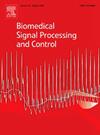scCAT: Single-cell Combined graph Attentional clustering for scRNA-seq analysis
IF 4.9
2区 医学
Q1 ENGINEERING, BIOMEDICAL
引用次数: 0
Abstract
The advent of single-cell RNA sequencing (scRNA-seq) has revolutionized gene expression research at the single-cell level, enabling the study of cellular heterogeneity and identification of rare cell populations. Deep clustering is crucial for analyzing scRNA-seq datasets by assigning cells into subpopulations. However, inherent sparsity and variability in gene expression pose challenges to clustering accuracy. To address these issues, a novel unsupervised deep clustering approach named single-cell Combined graph Attentional clustering (scCAT) is introduced. The method designs a dual-branch joint dimensionality reduction (JDR) module to learn gene expression. This strategy preserves key variance while capturing complex nonlinear relationships, effectively addressing the high-dimensionality challenges of single-cell data. Additionally, a Zero-inflated negative binomial (ZINB) distribution is integrated within the JDR to tackle significant noise, sparsity, and zero-inflation challenges. A graph attention autoencoder (GATE) then processes the graph-structured data, enhancing the integration of integrating cellular topological relationships and gene expressions. Finally, a k-means-based self-optimization technique refines clustering while synchronizing with representation learning. Experimental evaluations on eight scRNA-seq datasets demonstrate that scCAT significantly improves clustering performance, mitigates the impact of inherent data defects. The embeddings learned from both linear and non-linear perspectives eliminate inter-component interactions, uncovering complex underlying structures and enhancing the recognition of cellular topological relationships when combined with graph neural networks.

求助全文
约1分钟内获得全文
求助全文
来源期刊

Biomedical Signal Processing and Control
工程技术-工程:生物医学
CiteScore
9.80
自引率
13.70%
发文量
822
审稿时长
4 months
期刊介绍:
Biomedical Signal Processing and Control aims to provide a cross-disciplinary international forum for the interchange of information on research in the measurement and analysis of signals and images in clinical medicine and the biological sciences. Emphasis is placed on contributions dealing with the practical, applications-led research on the use of methods and devices in clinical diagnosis, patient monitoring and management.
Biomedical Signal Processing and Control reflects the main areas in which these methods are being used and developed at the interface of both engineering and clinical science. The scope of the journal is defined to include relevant review papers, technical notes, short communications and letters. Tutorial papers and special issues will also be published.
 求助内容:
求助内容: 应助结果提醒方式:
应助结果提醒方式:


